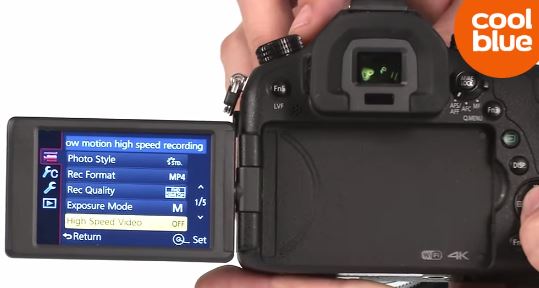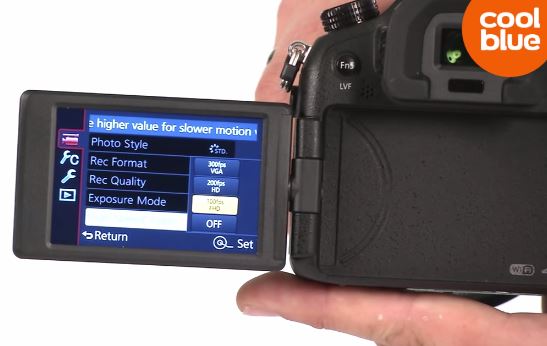We have finalized the analysis on the Sony a7s and the Panasonic FZ1000. We have placed the Sony in 4th place and the Pana in 5th place in our HSC Camera Guide. Even though the a7s is only 720p it has less aliasing than the FZ1000 at 120fps and the resolution seems very close. The Sony full frame also has noise characteristics that are much better than the 1″ sensor on the FZ1000.
All in all the Panasonic GH4 in 3rd place is still a better quality slow motion camera with conformed slow motion in camera to 24p and while a bit soft at 1080p it delivers about 14% better resolution than the a7s.
The FZ1000 gets penalized for over promising and under delivering, we have new evidence that shows the 720p 240fps and 360fps vga modes were included in pre-release firmware. If Panasonic decides to include the initially promised features then we will re-examine its place as a strong #4 or even #3 considering the quality of the 720p slow motion.
This first image shows the menu for High speed before selection:

Second image shows the high speed modes on PAL video mode which are 100fps FHD, 200fps at 720p and 300fps at vga resolutions.

You can see the video below on Youtube posted by cool blue a review site in the Netherlands, quite a comprehensive gear shop.
It is good to have evidence beyond the press releases and store spec sheets. The feature was there and Panasonic took it out for some reason. It also gives some hope that it can be either revived or unlocked. If you bought the Lumix FZ1000 camera be sure to tell Panasonic about your need for this feature. It may after all be something that could come back if there is enough interest.
Thank you for your support of HSC, Photokina September is near, lots of rumors already starting. Stay tuned


Cool website, I like micro-sites that specializes in one thing
One comment about your guide, the way you compute cost per frame should be normalized to 120 FPS (or something) – this way the Sony camera would be 2X+ cheaper per frame
Another sort of accurate measure would be to standardize on a resolution (e.g. 720P) and use the max FPS at that resolution and generate a scale factor based on the camera capable of the most FPS at that res. E.G. if this was 960 FPSm you would apply this as a scale factor (for example a camera only capable of 120 FPS at 720P would see it’s score multiplied by 1/8) – soft of become cost per pixel basis
You could also add another important quantifier, maximum bitrate recording at 120 FPS. Again using the camera with most bitrate (e.g. 200 and if a camera at 120 FPS only has 30 MBs bit rate of recording speed, it would be scaled again by 30/200).
Total Index: $_per_720P_120_FPS X Max_Res_of_Camera/Max_Res_of_Best_Camera_at_120FPS X
Max_Bit_Rate_At_120FPS/Max_Bit_Rate_Of_Camera_With_Highest_Bitrate_At_120FPS
I understand the base values are hard to derive for things like the Sony camera that will upscale in camera everything to 1080P when you shoot higher frame rates. It’s not clear for the FS700 if max FPS for 720P is actually really 480 FPS…
Finally cameras that can sustain 720P 120 FPS recording continuous direct in camera should get extra points
Cheers,
Pierre
We base our rankings on a list of over 20 parameters. Include resolution, artifacts, price, rolling shutter, highest frame rates and lowest, maximum iso, lens adaptability, mount, 720p vs 1080p, codec and more. We simplify the rankings because we don’t want any external influence from a manufacturer skewing the results. Our scale formula is weighted accordingly to the most important factors.
Big fans of Twixtor btw. If you have a recent version that is of interest to the readership please contact us. The
Thank you for your analysis and interest.
I would probably rank the Sony A7s a bit higher because it can shoot slow motion videos during very lowlight scenes like ISO 12800 and still being usable.
The camera crops the sensor and drops resolution to 720p. It has artifacts and more noise in the high speed mode. It was ranked above the FZ1000 for the high ISO even when it’s lower resolution. It also records audio in this mode which is also considered. If it was 1080p without crop it would take the #3 spot away from the GH4.